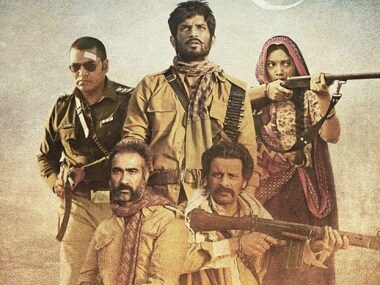Zoya Akhtar’s Gully Boy and Abhishek Chaubey’s Sonchiriya are recent Bollywood efforts that have reaffirmed the importance of authentic dialect in film dialogue. If we look at commercial Bollywood over the decades, barring the stray exceptions, our films have generally used Hindustani dialogue to cater to a pan-Indian audience rather than bring authenticity. A great film, Alfred Hitchcock once said, demands three things — “the script, the script, and the script”. In turn, the three components of a script are story, screenplay, and dialogue, which share a symbiotic relationship. Contrary to popular perception, good dialogue is not about sounding cool or beautiful. It is about finding a character’s voice and roots. With these elements in place, wit or lyricism become bonus. Over the decades, Bollywood dialogue has mostly focussed on a lyrical lingo that is intelligible to the masses of a nation where dialect changes every few kilometres. A brand of Hindustani, which is neither Sanskritised nor Persianised, became Bollywood’s chosen language. The rich, the poor, the urban and the rural spoke the same Hindustani with minor variations in diction. [caption id=“attachment_6182191” align=“alignleft” width=“380”]  Sonchiriya[/caption] Through the seventies and the eighties, when larger-than-life and rhetoric-heavy heroism ruled, authenticity of dialogue virtually vanished. Later when mainstream Bollywood discovered specific settings and characters, the Hindustani hangover became even more grating. The NRIs of Dilwale Dulhaniya Le Jayenge, the urbanites of Dil Chahta Hai, and the middle class of numerous films were all speaking the same language in the same dialect. By the 2000s, the industry was parodying itself in Om Shanti Om but the dialogue problem persisted, just as the presence of authentic characters in Zoya Akhtar films such as Zindagi Na Milegi Dobaara and Dil Dhadakne Do could not change the situation in the 2010s. A quiet shift started happening around the same time, though, with Anurag Kashyap and Vishal Bharadwaj. Kashyap’s Gangs Of Wasseypur or Bhardwaj’s Omkara proved dialogue could become an integral part of the narrative. Soon, directors such as Abhishek Chaubey (the Ishqiya series) and Vikramaditya Motwane (Udaan) were collaborating with Bhardwaj and Kashyap respectively. The dialogue became a character in their films. Yet, the language of these films wasn’t popular, which is where Gully Boy has scored. Its Bombaiyya dialect, penned by Vijay Maurya, has struck a chord with masses and classes alike. In Abhishek Chaubey’s Sonchiriya, Sudip Sharma has penned beautiful Bundeli dialogue, proving the lyrical flow of India’s native languages can be utilised without losing a character’s individual voice. With the streaming revolution on, web series are also experimenting with authentic language. Sacred Games featured Punjabi dialogue. Mirzapur has dialogue true to its Purvanchali setting. Made In Heaven has English dialogues true to its elite Delhi setting. Our filmmakers are learning to value the right word. Ends
Bollywood dialogue is emerging from its hangover of being flowery. Filmmakers are setting up socio-cultural context using specific dialects
Advertisement
End of Article


)
)
)
)
)
)
)
)
)



